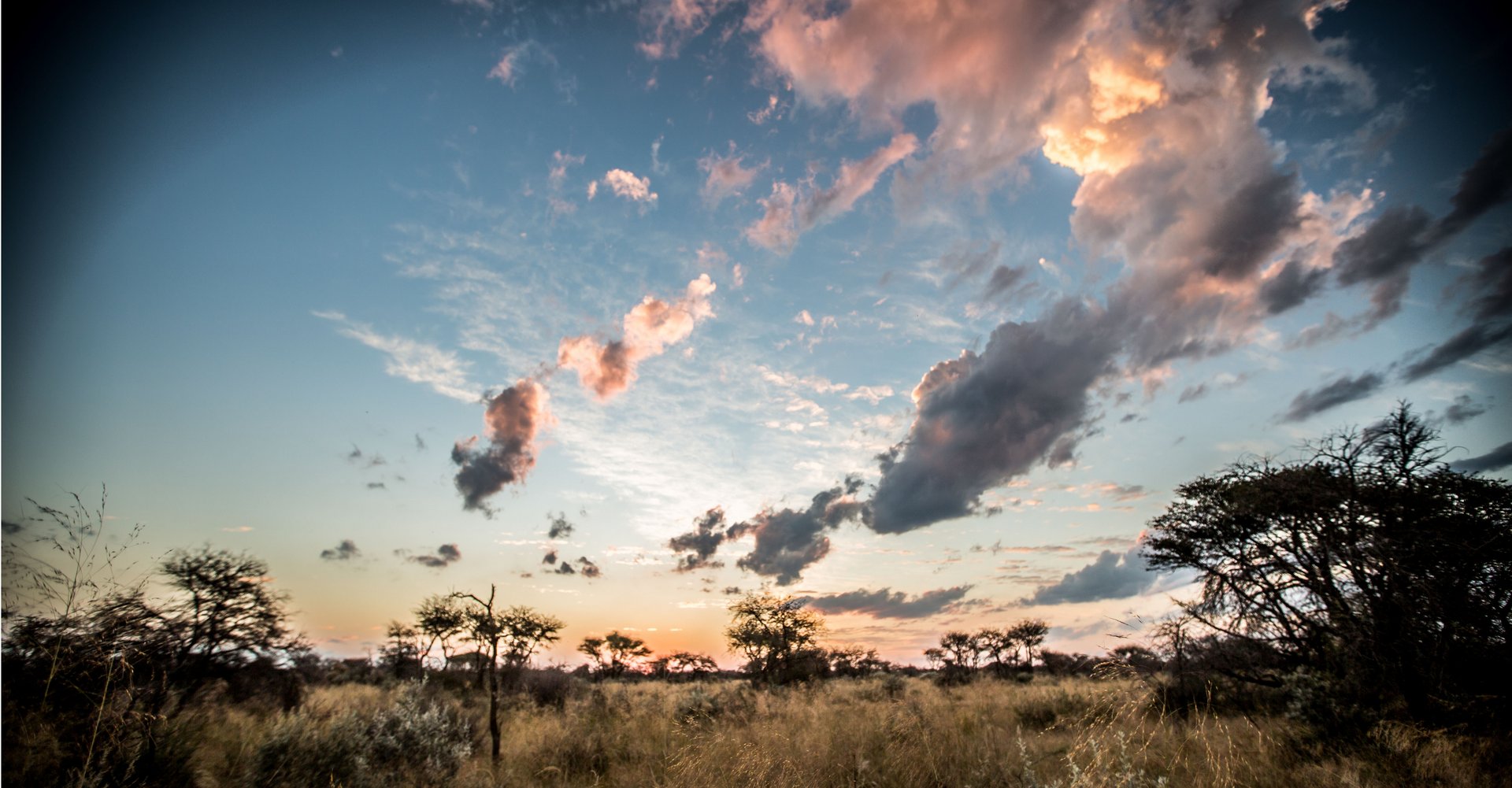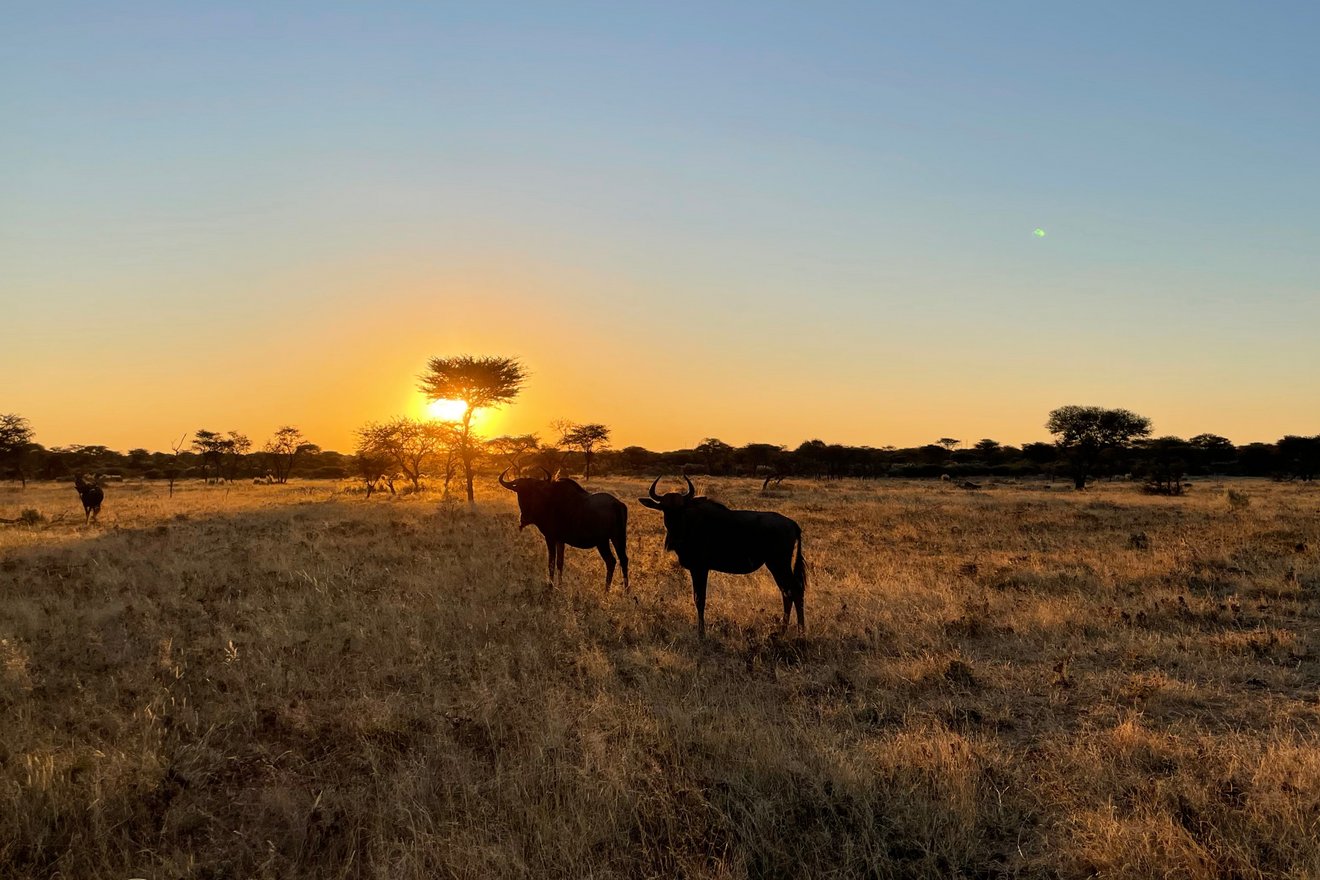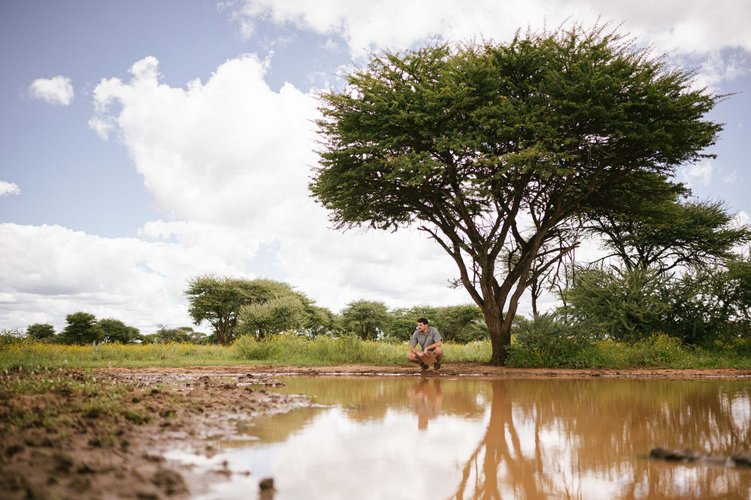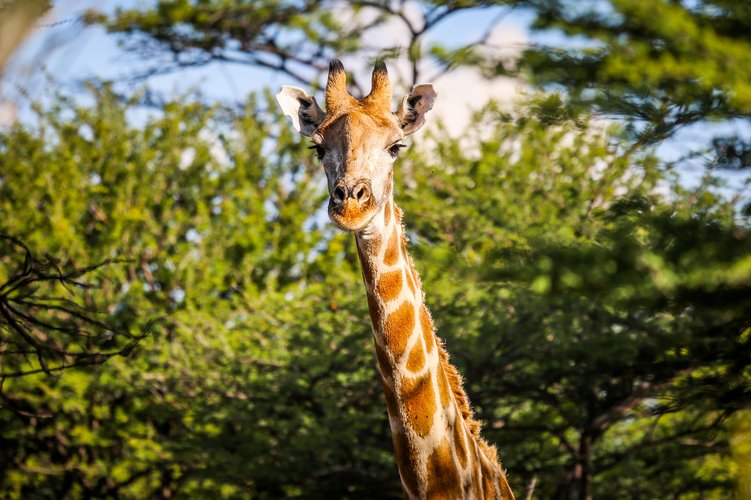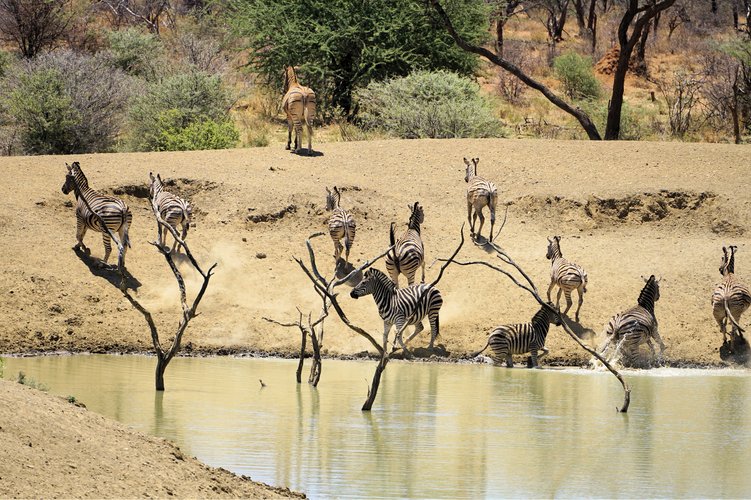WHEN IS THE BEST TIME FOR A NAMIBIA SAFARI?
First, it’s important to understand that the year in Namibia cannot be simply divided into the four seasons of spring, summer, autumn, and winter. Here, in the southwest of Africa, we primarily distinguish between two main weather periods: the dry season and the rainy season. The dry season typically begins in early May and lasts until the end of November, coinciding with our winter and cooler temperatures. The rainy season marks our "summer" (as the southern hemisphere experiences its warm and cold periods in reverse), with temperatures rising significantly from December and occasional downpours occurring through April.
However, the rainy season in Namibia is unlike that of the (sub)tropics. Here, it marks the months when any precipitation is possible at all. Unlike the rain-soaked regions of Central Africa, such as the Congo, or Southeast Asia, where it rains daily for hours or monsoons shape entire ecosystems, in Namibia, we hope for occasional rain showers from December to April after a long dry spell.
The intensity of both the dry and rainy seasons varies greatly across regions in Namibia. In the Zambezi region, high up in the Caprivi Strip, where a subtropical climate prevails year-round, the probability of rainfall is much higher during the rainy months than in southern Namibia, where rain is rare even in the "summer" around the Fish River Canyon, Sossusvlei, and the fringes of the Namib Desert.
Rainy Season
THE RAINY SEASON AT KAMBAKU
Rainfall Probability
From the end of December, the likelihood of precipitation in central Namibia steadily increases. Even during the Namibian "summer," dry days far outnumber rainy ones. When it does rain, it is usually short and intense. Continuous rain or multiple rainy days in a row are rare. Typically, fascinating cloud formations and increasing oppressive heat signal the onset of impressive downpours and spectacular thunderstorms. Heavy rain and lightning strikes often cause temporary power and internet outages and make roads impassable for a while.
Mid-January to mid-February marks the peak of our rainy season, with an average of 13 rainy days and 111 mm of precipitation. During a “good summer,” we can expect brief but intense showers every two to three days. On most days, however, the "weather lightning" only indicates that other farms are luckier than we are.
Temperatures
During the rainy season, daytime temperatures in inland Namibia can soar to 30 degrees Celsius and above. However, a gentle breeze often blows at KAMBAKU, making the perceived temperature more comfortable, though it may lead you to underestimate the sun's intensity. Even dense clouds passing overhead can cause temperatures to drop noticeably. Regardless of the weather, it’s essential to always wear sunscreen with a high SPF and a sunhat, and carry a light rain jacket, even if you're setting out under a bright sun.
Savannah Seasons
THE CHANGING SAVANNAH – WATER, THE LIMITING FACTOR
Since the length of days in Namibia remains relatively constant throughout the year, the vegetation cycle here depends on the probability of rainfall.
It’s a marvel each year to witness how the golden savannah transforms into a green oasis with the first raindrops. Just a few millimeters of rain are enough to awaken the resilient flora from its winter dormancy and kickstart the vegetation period. Within days, green grass sprouts from the red soil, intermittent springs begin to flow again, trees burst into leaf, and bushes start to bloom.
Our "summer" (rainy season) marks a golden period for herbivorous wildlife, whose birth rates soar with the rains. It’s a glorious time: throughout the reserve, you can encounter playful offspring and herds with their young, wandering through the bush. However, this doesn't guarantee wildlife sightings; although the number of animals increases, the dense, green bush makes spotting and tracking movements more challenging for the untrained eye. You can rely on the expertise of our guides, who will help you spot well-hidden wildlife as you explore the savannah by safari vehicle, on foot, or on horseback. Unlike the dry season, waterholes are not a guaranteed spot for wildlife sightings during this time. Morning dew, rivers, and natural waterholes provide animals with ample water even in the most remote corners of the reserve, so they are less drawn to the larger water sources.
Tour-Tip:
If you’re planning a tour through Namibia, consider traveling to Namibia’s west coast during the rainy season. The cold Humboldt Current in the Atlantic moderates the high temperatures and creates excellent travel weather in Swakopmund and the highlights of Skeleton Coast National Park.
In Etosha National Park, encounters with larger wildlife may be less frequent on some days. The park encompasses vast areas that serve as protected zones not open to visitors. In years with good rainfall, wildlife finds ample water in these refuge areas and may not visit the accessible waterholes with their young.
For bird enthusiasts, however, the rainy season at KAMBAKU and in Etosha National Park offers fantastic opportunities for unforgettable moments!
Dry Season
WEATHER DURING THE DRY SEASON AT KAMBAKU
From April onwards, the probability of rainfall decreases rapidly, and temperatures gradually begin to drop. By May, no further rain is expected for many months, and the long dry season begins.
This is the time when the savannah dons its golden-yellow colors, presenting the familiar image of a dry landscape with scattered umbrella acacias and bushes against the backdrop of long, golden savannah grass. As the dryness persists, the iron-rich soil leaves a fine, red dust on your boots, and every evening, sunsets unleash magical moments in nature. Gradually, natural water sources in the wildlife areas dry up, and rivers turn into wide, dry riverbeds. This is a fantastic time for wildlife viewing, as animals congregate at the man-made waterholes.
Temperatures During the Dry Season
Our guests are often surprised by how cold it can get during the Namibian "winter" from June to September. Few realize how far south Namibia actually is. Night frosts are not uncommon in the savannah, but due to the dryness, sledding at Waterberg is out of the question.
In the morning, it’s advisable to dress warmly with gloves, scarves, hats, and thick jackets, while for daytime excursions, layering is recommended. Daytime temperatures can rise to a mild 20-25 degrees Celsius, which may feel warmer in the sunny, sheltered spots.
Savannah Sunsets & Wildlife at the Water
The dry season offers increased opportunities for wildlife sightings due to the scarcity of water in the interior. The sparse vegetation provides better visibility through the savannah's bushes. Additionally, animals find few natural water sources in their remote refuges, drawing them to the large, man-made waterholes, where unforgettable moments are guaranteed.


